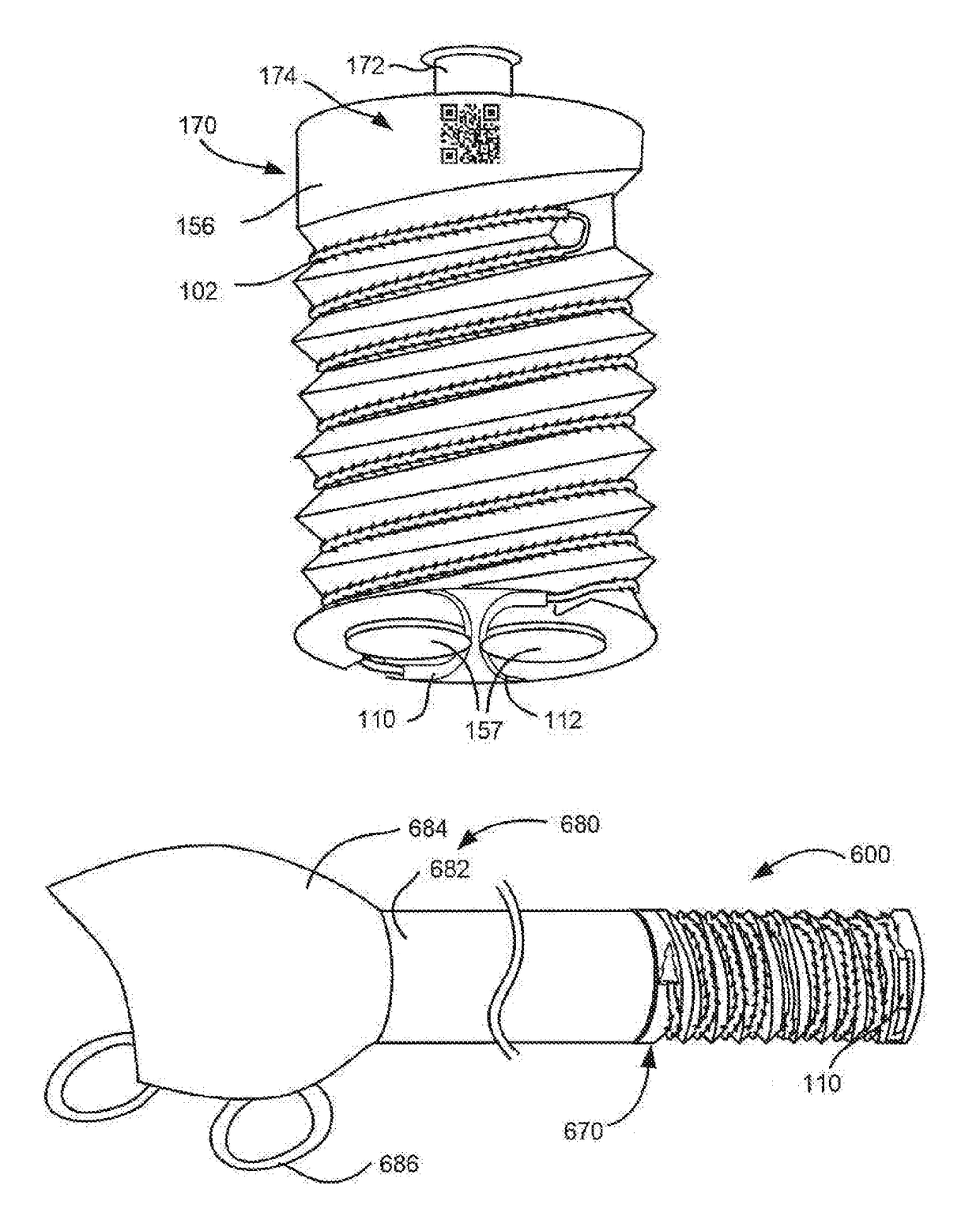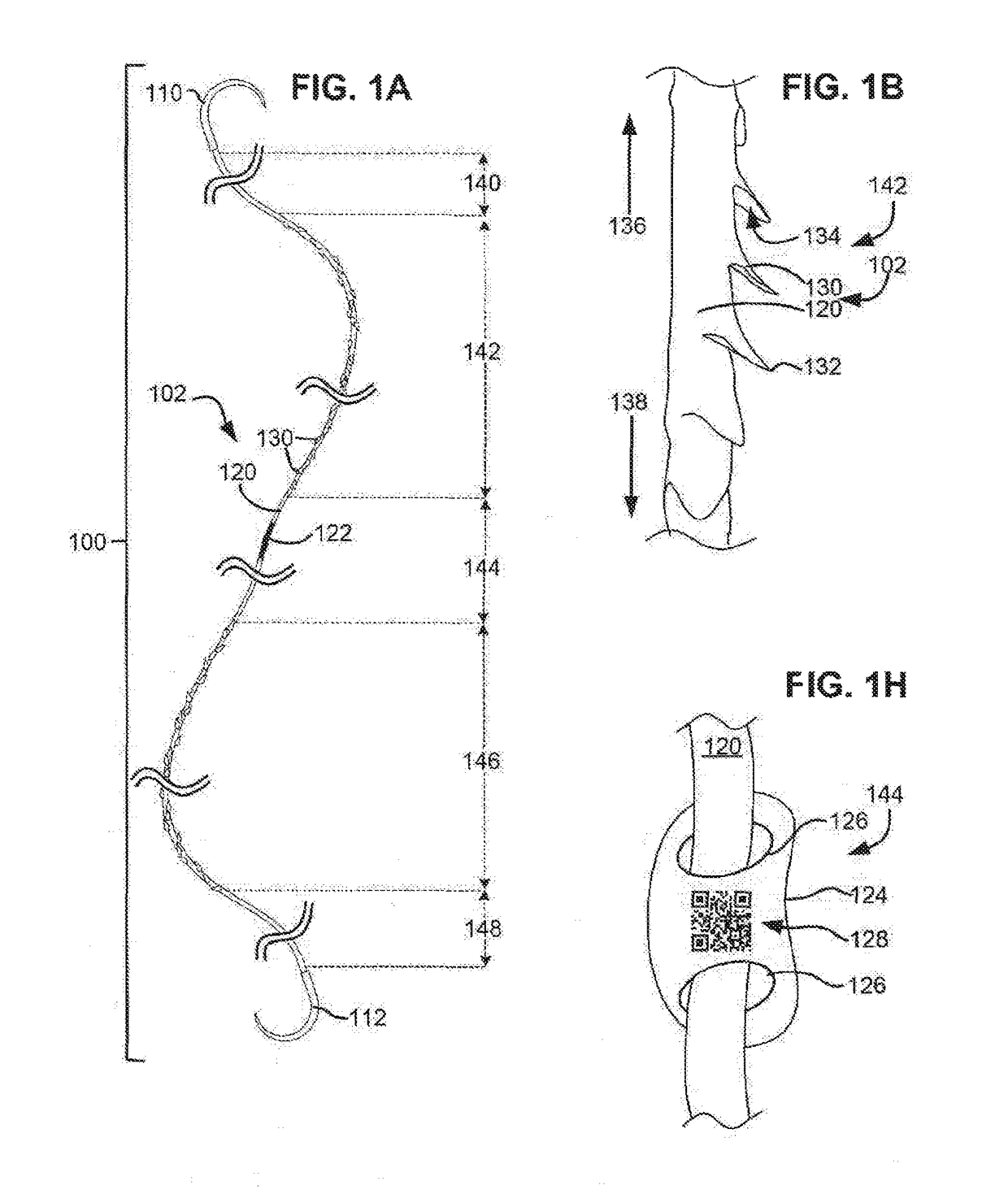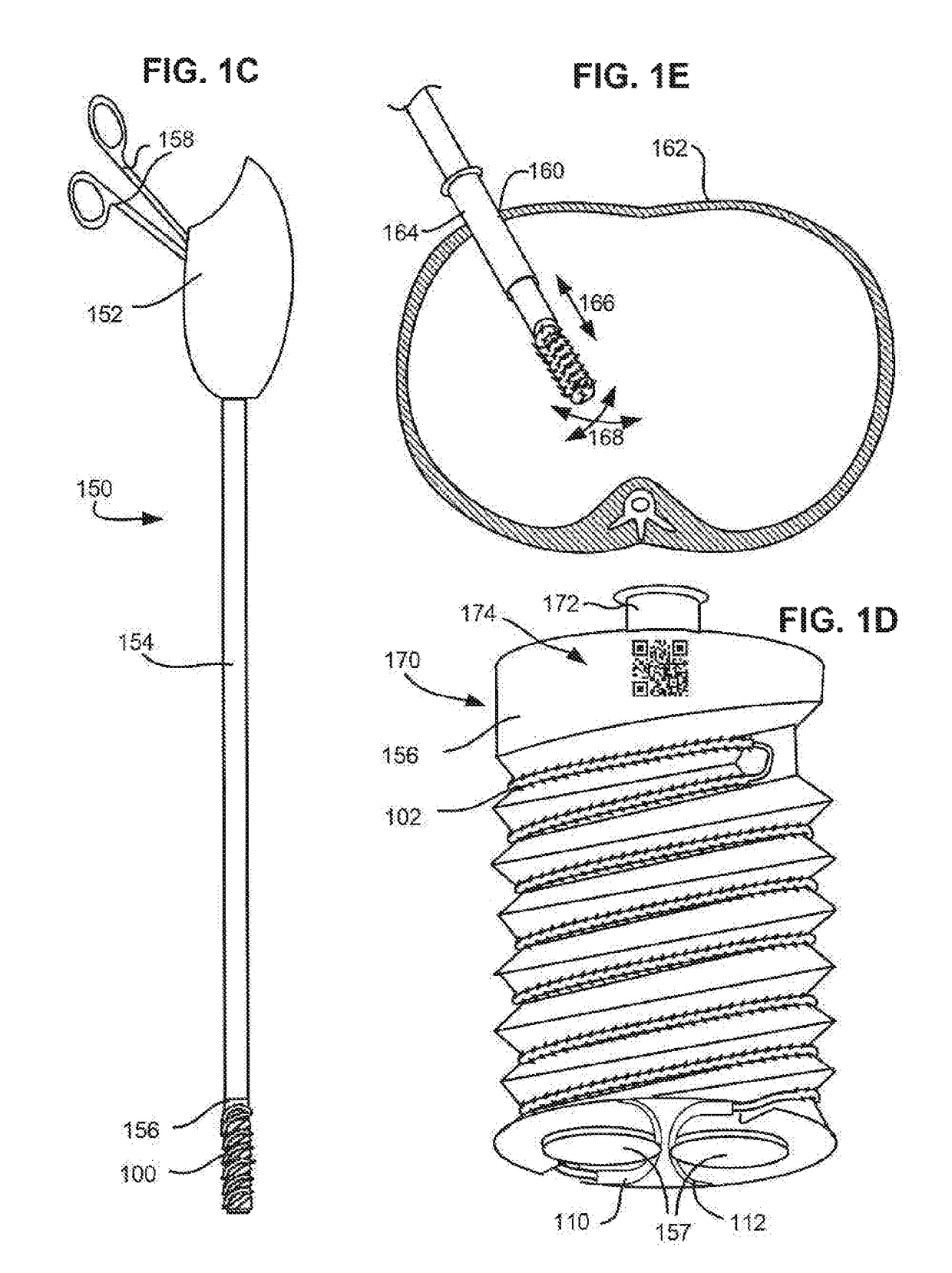Suture delivery tools for endoscopic and robot-assisted surgery and methods
a robot-assisted surgery and suture technology, applied in the field of suture delivery tools for endoscopic and robot-assisted surgery and methods, can solve the problems of shortening the average length of hospital stay for a procedure, denying the surgeon the flexibility of instrument placement, and mis-using hand-operated instruments, etc., to achieve enhanced functionality, enhanced clinical outcomes, and reduced time for the operation.
- Summary
- Abstract
- Description
- Claims
- Application Information
AI Technical Summary
Benefits of technology
Problems solved by technology
Method used
Image
Examples
Embodiment Construction
Definitions
[0041]Definitions of certain terms that is, in some embodiments, used hereinafter include the following.
[0042]“Self-retaining system” refers to a self-retaining suture together with devices for deploying the suture into tissue. Such deployment devices include, without limitation, suture needles and other deployment devices as well as sufficiently rigid and sharp ends on the suture itself to penetrate tissue.
[0043]“Self-retaining suture” refers to a suture that comprises features on the suture filament for engaging tissue without the need for a knot or suture anchor. S elf-retaining sutures as described herein are produced by any suitable method, including without limitation, injection molding, stamping, cutting, laser, extrusion, and so forth. With respect to cutting, polymeric thread or filaments is, in some embodiments, manufactured or purchased for the suture body, and the retainers can be subsequently cut onto the suture body; the retainers are, in some embodiments, h...
PUM
 Login to View More
Login to View More Abstract
Description
Claims
Application Information
 Login to View More
Login to View More - R&D
- Intellectual Property
- Life Sciences
- Materials
- Tech Scout
- Unparalleled Data Quality
- Higher Quality Content
- 60% Fewer Hallucinations
Browse by: Latest US Patents, China's latest patents, Technical Efficacy Thesaurus, Application Domain, Technology Topic, Popular Technical Reports.
© 2025 PatSnap. All rights reserved.Legal|Privacy policy|Modern Slavery Act Transparency Statement|Sitemap|About US| Contact US: help@patsnap.com



